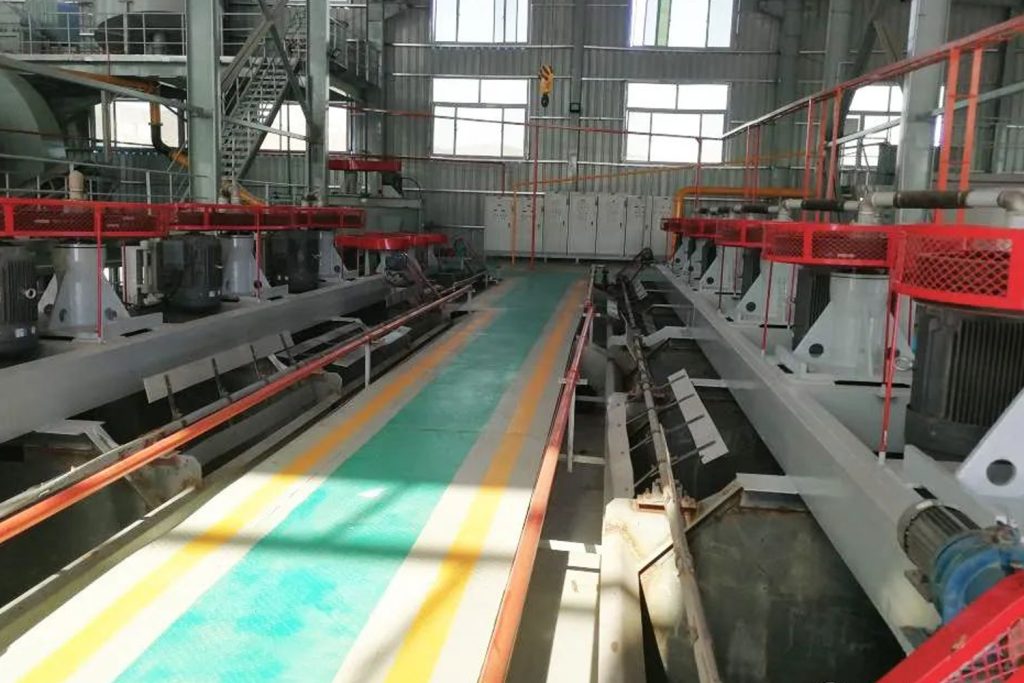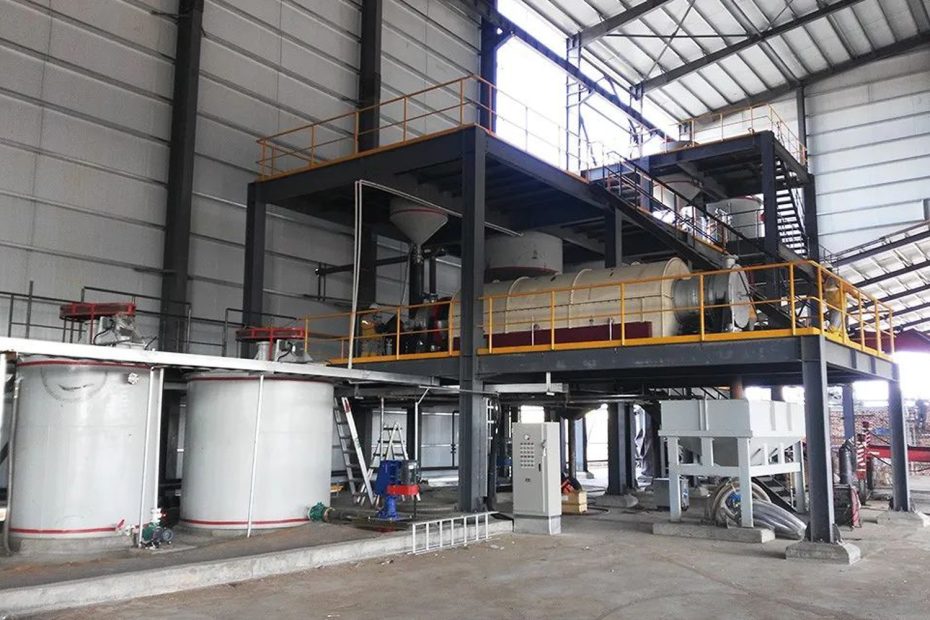The mineral processing recovery rate refers to the percentage of useful components extracted from the raw ore, and is an important indicator to measure the mineral processing effect. There are many factors that affect the recovery rate of ore dressing, mainly including the nature of raw ore, mineral processing, and mineral processing management.
Analysis of the three major factors affecting the recovery rate of beneficiation
In this paper, we will analyze their impact on the recovery rate of ore dressing in detail from these aspects.
Raw ore properties
The effect of raw ore properties on the recovery rate refers to the influence of factors such as the grade, distribution relationship, occurrence state, physical properties, and chemical properties of the useful components in the raw ore on the percentage of useful components extracted from the raw ore. The influence of raw ore properties on the recovery rate mainly includes the following aspects:
- Grade of useful components: Generally speaking, the higher the grade of raw ore, the higher the recovery rate because the higher the grade of ore, the higher the content of useful minerals.
- Embedding relationship of useful ingredients: The embedding relationship of useful ingredients refers to the combination mode and degree of useful ingredients and other substances in raw ore. Generally speaking, the simpler the intercalation relationship of useful ingredients, the higher the recovery rate.
- Physical properties of raw ore: The physical properties of raw ore refer to the characteristics of various substances in the raw ore in terms of shape, structure, density, hardness, color, and luster. Generally speaking, the greater the difference in physical properties of various substances in raw ore, the higher the recovery rate, because various substances are easier to be distinguished and separated during the mineral processing.
- Chemical properties of raw ore: The chemical properties of raw ore refer to the characteristics of various substances in raw ore in terms of composition, reactivity, solubility, redox and other aspects. Generally speaking, the greater the difference in chemical properties of various substances in raw ore, the higher the recovery rate, because various substances are easier to be changed and separated during the mineral processing.
Mineral processing
The mineral processing refers to the method and steps of extracting useful components from raw ore, including crushing, screening, gravity mineral processing, flotation, magnetic separation, electric separation, etc. Different processes are suitable for different raw ore types, and choosing an appropriate process can improve the recovery rate.
At the same time, the optimization and improvement of the process can also increase the recovery rate. The impact of the optimization and improvement of the mineral processing on the recovery rate mainly includes the following aspects:
- Improve the degree of refinement of raw ore: The degree of refinement of raw ore refers to the particle size range suitable for mineral processing of raw ore after physical treatment such as crushing and screening. Generally speaking, the higher the degree of refinement of raw ore, the easier the separation between useful components and impurities, and the higher the recovery rate. However, excessive refinement will also increase energy consumption and loss, and reduce recovery rate. Therefore, it is necessary to determine a reasonable degree of refinement according to different raw ore types and process requirements.
- Improve the performance and efficiency of mineral processing equipment: Mineral processing equipment refers to mechanical equipment used to separate useful components and impurities in raw ore, including gravity separation equipment, flotation equipment, magnetic separation equipment, and electric separation equipment. The performance and efficiency of mineral processing equipment directly affect the recovery rate of mineral processing. Optimizing and improving mineral processing equipment can improve its processing capacity, separation effect, stability and reliability, thereby increasing the recovery rate.
- Improve the selection and use of mineral processing agents: mineral processing agents refer to chemical substances used to change the physical or chemical properties of useful components or impurities in raw ore to achieve their separation, including flotation agents, leaching agents, and precipitation agents. The selection and use of mineral processing agents have an important impact on the recovery rate. Optimizing and improving mineral processing agents can improve their selectivity, activity, stability and environmental protection, thereby increasing the recovery rate.
- Improve the rationality and flexibility of the mineral processing: The mineral processing refers to the specific steps and sequence of extracting useful components from raw ore, including pretreatment, roughing, mineral processing, sweeping, dehydration, etc. The rationality and flexibility of the mineral processing also have an impact on the recovery rate. Optimizing and improving the mineral processing can improve its adaptability, simplicity, continuity and controllability, thereby increasing the recovery rate. For example, adopt new combined processes, modular processes, intelligent processes, etc.

Mineral processing management
The impact of mineral processing management on the recovery rate refers to the process of effectively monitoring, adjusting and controlling the mineral processing to ensure the stability and improvement of the mineral processing effect, thereby improving the process of the mineral processing recovery rate. The impact of mineral processing management on recovery rate mainly includes the following aspects:
- Equipment management: Equipment management refers to the effective maintenance, repair and update of mineral processing equipment to ensure the normal operation and high-efficiency performance of the equipment, thereby improving the recovery rate. For example, formulate reasonable equipment maintenance plans and overhaul plans to detect and eliminate faults in time; regularly perform performance tests and evaluations on equipment, and update and replace outdated or damaged equipment in a timely manner; introduce advanced equipment technology and management methods to improve equipment automation and level of intelligence.
- Quality management: Quality management refers to the effective monitoring, analysis and control of mineral processing raw materials, products and processes to ensure the stability and improvement of mineral processing quality, thereby increasing the recovery rate. For example, establish sound quality standards and testing methods, conduct regular testing and analysis of raw materials, products and processes; adjust process parameters and conditions in a timely manner based on quality data, and optimize separation effects; establish an effective quality feedback mechanism to promptly solve quality problems and Improved quality levels, etc.
In conclusion
The above are the three aspects that affect the recovery rate. In addition to the recovery rate, there are many factors to measure the mineral processing effect, which need to be judged according to the specific situation and need to be considered and balanced comprehensively. Through the analysis and optimization of these factors, the recovery rate of ore dressing can be improved, thereby improving the effect and benefit of ore dressing.
